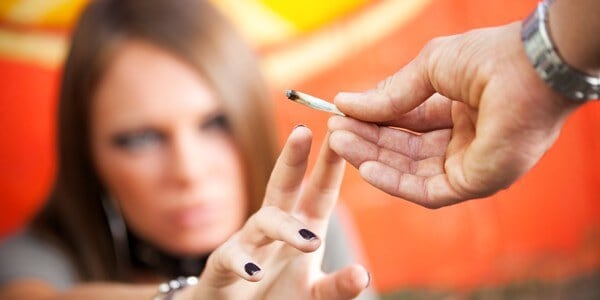A new analysis of teenage drug abuse finds widespread problems among whites, Native Americans, Hispanics and youngsters of multiple races, with less severe abuse among Asian and African-American teens.
Among kids who abuse drugs, marijuana is most heavily used, followed by stimulants and then alcohol. Prescription opioids such as oxycodone have surpassed inhalants as a source for getting high.
The findings, reported Monday by scientists at Duke University and elsewhere, are published in the November issue of the journal Archives of General Psychiatry.
“I think it will be surprising to some people what the numbers show,” said Dan C. Blazer, MD, PhD, in Duke’s Department of Psychiatry and Behavioral Sciences and senior author on the study. “There’s a significant burden of these disorders, and it’s important to recognize that among teens using these substances, there’s between a 10 percent and 26 percent chance of having a substance use disorder.”
Blazer said the group analyzed data collected between 2005 and 2008 from confidential national surveys of 72,561 adolescents ages 12 to 17. Of those youngsters, 37 percent said they had used alcohol or drugs in the past year; 7.9 percent met the criteria for a substance use disorder, meaning their use had escalated, interfered with other activities, caused legal problems, or damaged relationships.
Native American teens were found to have the highest prevalence of alcohol use (37 percent), followed by whites (35.3 percent) and Hispanics (32.2 percent). By contrast, 24.8 percent of African-American and 18.9 percent of Asian teens reported using alcohol in the previous year.
Drug use followed a similar pattern, with the highest rate of use reported among Native American youngsters (31 percent), children of multiple ethnicities (23.3 percent) and whites (20 percent). African-American and Hispanic youths had drug use rates of about 18 percent, while Asians had the lowest rate at 11.7 percent.
As the researchers parsed the data further, Blazer said, they found troubling use patterns. In some cases — heroin, for example — the drug was used by a small fraction of teens, but was the most likely to result in addiction or abuse, with 26.4 percent of users developing problems.
In the case of the more widely used marijuana, 25.9 percent of teens had an abuse/dependency problem with it. And the frequency of its use was more than twice that of most other drugs, with abusers reporting they had used marijuana for an average of 79 days in the last year. Use of stimulants came in second for the average number of days in use, at nearly 47, followed by opioids at about 39 days, and alcohol at nearly 36 days.
Blazer said a drawback to the study is that it did not break the racial and ethnic groups into subsets to determine where the problems lie. He said some Native American groups, for instance, have few problems with substance abuse, but their rates get lumped in among other Native American groups that have troubling rates.
“This is a road map,” Blazer said, adding that additional scrutiny of the data would help policymakers determine where to focus attention. “Substance abuse problems are very difficult to treat when you get into adulthood. If you really want to reverse the abuse and dependence on these drugs, what you need to do is start early, and focus on trying to get these young people into treatment, or catch them earlier and stop them from even starting.”
In addition to Blazer, study authors include lead researcher Li-Tzy Wu and Chongming Yang from Duke; George E. Woody from The University of Pennsylvania School of Medicine; and Jeng-Jong Pan from the Veterans Health Administration in Washington, D.C.
The study was funded with grants to Li-Tzy Wu at Duke from the National Institute on Drug Abuse; the Duke authors reported no financial conflicts.


